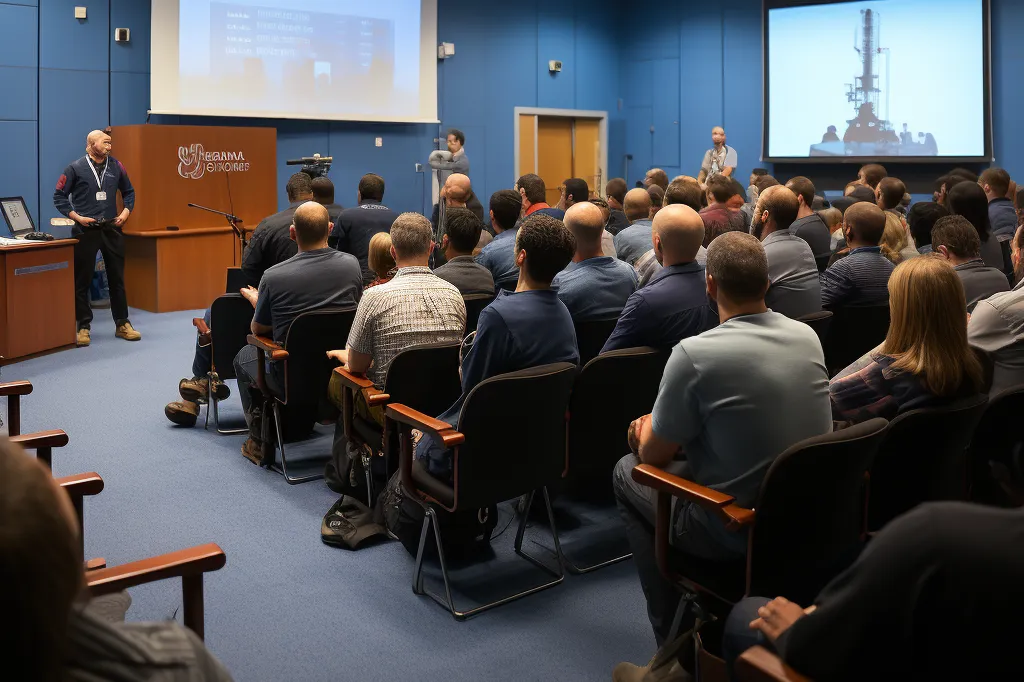Published
1 month agoon
By
admin
In the realm of health, safety, and security, mastering the art of Hazard and Operability Studies (HAZOP) becomes not just a skill but an essential competency for safety leaders. Understanding the nuances of HAZOP contributes significantly to identifying potential hazards and ensuring operational integrity across various industries. Therefore, embracing HAZOP techniques has never been more crucial for professionals in safeguarding lives and assets.
HAZOP is a structured and systematic approach that effectively identifies hazards and operability issues associated with process systems. By anticipating potential deviations from the intended design and operations, HAZOP facilitates preventive measures and contributes to safety improvements. Understanding its framework is vital for any safety leader aiming to foster a safe working environment.
Effective HAZOP leadership plays a central role in the successful execution of HAZOP studies. Leaders guide teams through the systematic evaluation, ensuring that all perspectives are considered. This inclusivity not only enhances the quality of the assessment but also fosters a culture of safety and awareness among team members.
By enhancing their HAZOP capabilities, leaders can build confidence among their teams, leading to more effective communication and collaboration. This collaborative approach is particularly essential when addressing complex processes or systems where multiple factors contribute to safety risks.
Mastering HAZOP techniques encompasses several aspects, from understanding the methodology to applying it effectively in real-world scenarios. Each safety leader must develop these techniques through continuous learning and application. One practical approach to gaining mastery is by enrolling in The Comprehensive Certified HAZOP Leader Training Course, which provides in-depth insights and practical skills.
The success of HAZOP initiatives often hinges on practical applications. Leaders must integrate HAZOP studies into everyday safety practices to promote a proactive safety culture. This can involve regular training sessions, workshops, and updating team members on emerging HAZOP methodologies.
Ensuring that all relevant stakeholders participate during a HAZOP analysis is essential for thorough evaluations. Involving diverse perspectives provides a comprehensive understanding of potential risks and devises effective mitigation strategies.
Implementing effective strategies is crucial for overcoming challenges encountered during the HAZOP process. Safety leaders can enhance the efficiency of HAZOP studies by adopting a strategic mindset.
Continuous improvement is an integral part of any safety management system. By prioritizing lessons learned from previous studies, leaders can refine their HAZOP processes. Moreover, they can utilize these insights to train new team members, effectively passing down knowledge.
Embracing technology offers innovative solutions to streamline the HAZOP process. Various HAZOP software tools facilitate data organization and analysis, allowing teams to focus more on critical thinking and decision-making.
Cultivating a robust safety culture begins with effective HAZOP leadership. Leaders must embody safety values and promote open dialogue surrounding hazards within the workplace.
Investing in training resources, such as those provided in the Mastering HAZOP Techniques for Safety Leaders, enhances the overall effectiveness of HAZOP programs. This type of training empowers employees with knowledge and skills, enabling them to actively contribute to safety measures.
Recognizing individuals who contribute to safety initiatives reinforces the importance of a safety culture. Leaders can implement reward systems that acknowledge employee efforts in identifying and mitigating hazards.
For HAZOP approaches to be effective, they should integrate seamlessly into an organization’s operational framework. This integration ensures that safety processes are not treated as standalone initiatives but as core components of an organization’s overall strategy.
Leveraging cross-functional teams allows different departments to contribute their insights into safety processes. This collaborative effort results in a more nuanced understanding of hazards and their potential effects.
Adhering to local and international safety regulations is an essential aspect of HAZOP integration. Leaders must ensure comprehensive assessment reports that meet all compliance requirements.
HAZOP, or Hazard and Operability Study, is a systematic methodology aimed at identifying hazards and operability issues in processes. It enhances safety by assessing potential deviations from intended operation.
HAZOP training benefits safety leaders, process engineers, project managers, and anyone involved in process safety management. It equips them with essential skills to effectively manage hazards.
HAZOP is critical because it enables professionals to proactively identify and mitigate risks, thereby preventing accidents and ensuring compliance with safety regulations.
Mastering HAZOP techniques fosters an environment of safety and responsibility among safety leaders. By understanding and applying HAZOP methodologies, leaders can significantly enhance their organizations’ safety culture, protect assets, and save lives. Continuous learning, effective implementation, and a collaborative spirit in HAZOP processes contribute to sustainable safety management. Thus, it is paramount for safety professionals to engage in HAZOP training and integrate its practices into their everyday operations. Explore further insights and resources through these articles on essential skills for effective HAZOP leadership, unveiling the secrets of HAZOP methodology, strategies for overseeing HAZOP studies effectively, innovative approaches to HAZOP risk assessment, building a safety culture through HAZOP practices, navigating HAZOP skills for safety professionals, empowering teams with HAZOP knowledge, key insights into successful HAZOP applications, influencing safety standards with HAZOP expertise, fire safety: essential workplace practices, understanding operational risk in healthcare, mastering operational risk for health & safety, understanding occupational health standards, and ensuring safe food practices in every kitchen.
